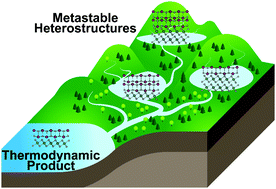Challenges in synthesis of heterostructures
Abstract
Developing the ability to reproducibly prepare materials drives the advancement of human technology. Trends in historical advances and extrapolation of current technologies suggest that the next logical step is developing the ability to control structure and composition at near atomic scales in device manufacturing to take advantage of emergent properties discovered in 2D materials and heterostructures. This article reviews a subset of synthetic approaches used to prepare heterostructures, outlining key reaction steps, and how experimental parameters are used to control which product forms. The positive attributes of each synthesis approach are discussed along with some of their limitations. The elemental reactant (MER) approach is discussed in more depth.



 Please wait while we load your content...
Please wait while we load your content...